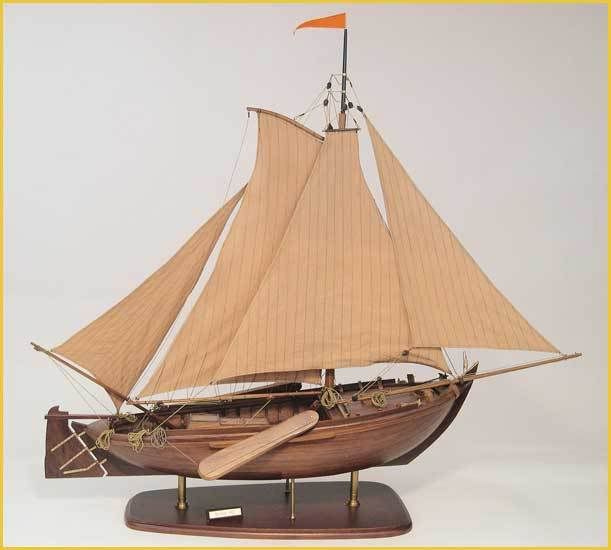Botter

Zuiderzeebotter
Yesterday, I bought a wonderfully detailed replica of a typical Dutch fishing boat (a botter), which was used by fisherman around the "Zuiderzee" (known today as the "IJsselmeer"). I have been looking for such a model for quite some time now. They're hard to find, even the boats of less quality which are sold to tourists. This is why I did not need much time for thought to decide to buy this piece of craftmanship almost immediately after I found it.
For numerous reasons, to me the boat is well worth the price I paid for it, as it awakes senses of freedom, adventure, serenity, power, balance, romance and appreciation of nature.
As teenager, I was one of the most active members of the local group of sea scouts and was granted responsibility of a boat of my own, a "lelievlet", with sailnumber ZV497 (built in 1969), baptised as "Mango Tjetney". I was leader (Boatsman) of a group of nine scouts, aged between 11 and 16, called "de Reigers" (the Herons).
Anyone who is an experienced sailor knows that each boat handles differently. The ZV497 was particularly tricky to sail, as the port side rigging had much less curve than the one on starboard side. This was due to an unfortunate accident a few years prior to the moment that I got to sail this boat, when it was crushed between the closing doors of the Belfeld lock. As a consequence, every other truss could be sailed sharper against the wind than any other Lelievlet was capable of.
At the peak of my sailing skills, I could rig the boat, leave the harbour and sail it all on my own, without assistance. And throughout almost the entire year, I used to go sailing after school. Often with lips turned blue because of the cold wind and hands that I could no longer open from holding the sheet in strong winds, I used to experience total freedom whenever I sailed. And with no one around, this was combined with serene silence, only interrupted by the sound of water rippling against the hull.
I felt like I could ride the winds like no other, in an effort to tame the elements, whilst being thoroughly aware that this was a lost struggle. Quite a few of my friends were involved in accidents due to broken rigging, causing the mast or the fork of the gaff to break and fall down into the boat, or by collisions with barges on the river Maas -a busy trading route- caused by sudden increase or loss of wind.
Being a Dutchman, I know what destructive powers wind and water can unleash, especially when both these elements are combined.
But Zephyr and Neptune also brought wealth and prosperity to my country. The Dutch, including my ancestors (provided that my family tree is correct), used to sail the world seas as fisherman, traders or buccaneers. To experience this golden age of florescence of the Dutch economy, with its bitter harshness to the working class, I frequently visit places where this period is still most visible, for example the old VOC cities of Amsterdam, Rotterdam, Delft, Middelburg, Enkhuizen and Hoorn. But also small fisherman's villages such as Urk, Spakenburg, Stavoren, Marken, Goes and Veere.
And the final reason why I am so fond of my latest purchase is because ships such as these are almost entirely made out of wood and therefore represent honest craftsmanship, using hardly anything more than natural resources, while showing respect and love for nature in the shape of the boats and the way individual planks and beams appear to have been mounted exactly where they serve best.
When I look at my boat, I see and re-live all of this and many things more. Money well spent!
To learn more:
Masterpiece Ship Collection (shop information, including basic knowledge about various types of vessels)
the Lelievlet (Dutch site, containing information on the Lelievlet, including the ZV497)
Belletable-Stella Maris (web site of the Venlo sea scouts, of which I was an active member)
the VOC (English Wikipedia entry on the Dutch East India Company)
Schokland (one of my previous journal entries)
(links open in a new window)